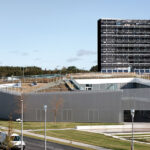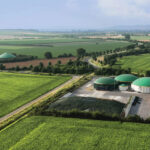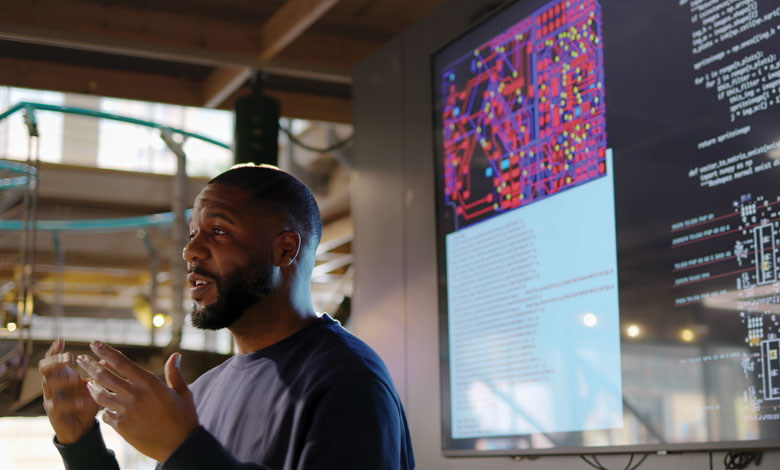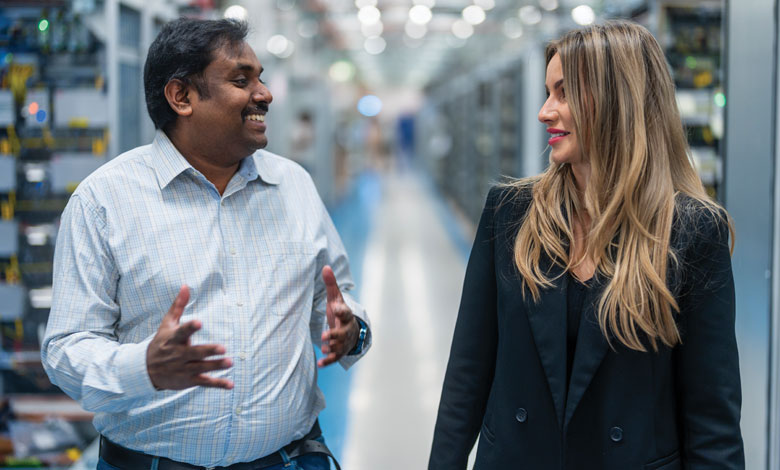
Unlocking our underground advantage: Geothermal energy
14th October 2025
Unlocking European biogas and biomethane
14th October 2025Ireland’s commitment to the energy agenda

With a sharp focus on renewable energy, the electrification of transport and heating, and rising electricity demand from data-driven sectors, Ireland’s electricity grid is at the heart of a national transformation and importantly its move away from fossil fuels.
Ruairi Williamson, Country Managing Director at Hitachi Energy Ireland, says: “Our projects are growing at lightning speed, following the commitment of key players such as EirGrid and ESB Networks. We are proud to play a role in futureproofing the grid to deliver a resilient, low-carbon power system for generations to come.”
Electricity demand in Ireland is expected to grow by more than 45 per cent by 2030. To prepare for this expansion, Ireland is investing heavily in upgrading its transmission and distribution infrastructure. The scale and complexity of Ireland’s energy transition requires unprecedented coordination between transmission and distribution system operators. EirGrid and ESB Networks are working in a close partnership to deliver this critical infrastructure.
Major grid development programmes include stakeholders planning for new offshore wind connections, ensuring the transmission grid can carry renewable power inland, and the distribution grid can manage dynamic, local loads. This also includes preparing for active customers by enabling smart meters, flexible tariffs, and real-time communication across the system. Forward planning also means delivering futureproof, new overhead and underground lines, and digital platforms to support visibility and control across the grid.
This collaborative effort is ensuring that grid development is proactive, strategic, and aligned with Ireland’s broader decarbonisation goals, enabling everything from new offshore wind farms to electric vehicle charging networks.
Renewable integration
Renewable integration has become a national imperative. In 2023, wind energy contributed more than 35 per cent of all-island electricity, while solar is rapidly expanding with 700MW now connected and contributing up to 10 per cent of demand during peak daylight hours.
Generation requires fast, responsive systems to maintain supply and demand balance. Grid congestion limits the ability to bring renewable energy from rural or coastal areas to where it is needed most. System stability is harder to maintain with fewer traditional fossil-fuel generators on the system. This is where investment in smart grids, digital substations, battery storage, and real-time monitoring systems becomes vital.
“But these are challenges we see all over Europe,” explains Williamson. “With infrastructure timeline building new lines and substations takes time, often slowed by planning and permitting processes.
“There is also a challenge in the variability of renewables, and the increased capacity needed on the supply side, and balancing this with a relatively steady demand side. Smart technology is already proving the way forward in being able to identify trends and adjust fluctuations in supply and monitor outputs but will also be crucial for our country’s energy balance and security.”
Digital transformation
Williamson advocates for the digital transformation of Ireland’s energy sector, pointing out that “the increasing volume of data generated by renewable sources requires advanced communication systems and analytics for real-time decision-making”.
By incorporating AI and other digital technologies, Ireland can manage its grid more effectively, ensuring a reliable power supply as renewable energy grows to become the backbone of the nation’s electricity system. It is also important that we meet the demand from the increased electricity demand driven by the growth of AI.
“Data centres will continue to grow. These facilities place intense, fast-growing demand on the grid and need to be managed carefully to ensure system stability. What we see from our counterparts in the UK and the same is true for Ireland is the need to gain community buy-in for new energy infrastructure that requires clear communication and a long-term vision,” asserts Williamson.
The opportunities are enormous. With interconnectors to Europe and the UK, Ireland could export surplus renewables to help power its neighbours through green energy exports. Ireland has the potential to become a testbed for smart grid technologies, including flexible demand, virtual power plants, and AI-driven energy management. A huge benefit in upgrading the grid will mean it will boost the economy and provide thousands of high-quality jobs across the country.
Hitachi Energy has been a key technology partner in Ireland’s energy journey, particularly in enabling secure, flexible, and sustainable grid infrastructure. Key contributions include:
- delivering the HVDC Light® technology behind the East-West Interconnector, which connects Ireland to the UK and provides 500MW of bi-directional power flow;
- signing a long-term EnCompass™ service agreement in 2024 to maintain and optimise the interconnector, ensuring long-term system reliability; and
- supplying next-generation grid technologies such as Grid-eMotion® Fleet charging infrastructure, already deployed in Limerick to support electric public transport via Bus Éireann.
Hitachi Energy’s global manufacturing expansion – including a $6 billion investment and the hiring of 15,000 people worldwide by 2027 – positions it to support major grid projects across Ireland in the years ahead. Ireland’s electricity grid is being reshaped for a carbon-free, digital, and decentralised future. The integration of offshore wind into the grid requires the development of new technologies, infrastructure, and grid management strategies.
With strong public-private collaboration, visionary planning, and the support of global innovators like Hitachi Energy, the country is well on its way to becoming a clean energy leader. The challenges are real, but so are the opportunities. If industry, government, communities, and technology partners can continue to work together, Ireland can deliver a grid that is not only stronger, but smarter, greener, and built for the generations to come.
 Ruairi Williamson, Hitachi Energy
Ruairi Williamson, Hitachi Energy
For further information visit
W: www.hitachienergy.com


